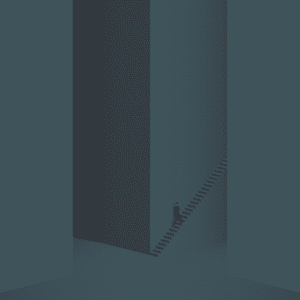
Despite our human tendency to over-compartmentalize the “right-brained” and “left-brained,” the overlap between the two seemingly incompatible areas is very real and, when used in a way that is balanced, can produce some very impressive results. The details surrounding this concept are fairly nuanced, to the extent that some researchers have devoted their entire careers to unpacking and better understanding it.
For the sake of brevity, I will focus on three important ways to use creativity to make better business decisions: research, perspective, and intuition.
Research: Making Informed Decisions
My major in college was graphic design. Though I had been practicing the more visual aspects of the field for years, I had an extremely difficult time grasping much of the theory surrounding it.
One of the concepts that really did not click for me until the second semester of my senior year was the benefit of informed decision making in design. At the time, I was set on creating an aesthetically pleasing work that merely got the point across. It was only after three and half semesters of intense schooling, and reading an utterly enlightening interview with Charles Eames that I realized the role of a designer is not to create visual appealing works, but rather to solve a problem. In essence, arbitrary decision making leads to work that does not best serve its purpose.
This same principle applies in business. If you want to sell a product and blindly move into the production phase because you are overly-gitty about the potential results, then the whole operation will likely fall flat. There is a reason that large firms pour billions into research and development, and it is because informed decisions produce positive results.
Perspective: Strive to Be Customer Centric
One of the most essential parts of designing effective work, be it a couch or a business plan, is viewing it from the perspective of the audience. Particularly in marketing, if you are able to view your work from the audience’s perspective, you will be able to more accurately address their wants and/or needs.
Like any skill, this takes practice but is incredibly helpful in many areas of life. This necessity of perspective in creating a product or service is a big part of why entrepreneurs are encouraged to address issues about which they are passionate and by which they have been affect.
Richard Branson, one of the most successful and prolific entrepreneurs of our time, famously started Virgin Atlantic Airlines after an airline cancelled a flight Branson and others were supposed to take to the British Virgin Islands. He rented a plane and filled it with paying customers who were also bumped from the flight. Branson, now acutely aware of the inconveniences of commercial air travel, sought to create a better airline.
If you are able to see through the eyes of your target market, you will build more useful products and services and subsequently market them in a more compelling way.
Intuition: Go With Your Gut…Sometimes
Often in art and design, creators will reach dead ends, of sorts, where they are faced with difficult decisions that have the potential to make or break the effectiveness of their creation. When research simply is not enough, it can be helpful to turn toward intuition.
Intuition, which artists and designers spend years honing, tends to take over in these instances to help the aforementioned evaluate creative options and make decisions. While there are many aspects of business, and design, that are based on objective information, it is not at all unreasonable to go with one’s gut. In fact, there is scientific evidence that supports this notion. Research suggests that what we perceive as intuition may actually be our subconscious memory at work.
In business, indecisiveness can kill an initiative. It is important to draw from past experiences, weigh options carefully, and employ intuition when possible.
Using Creative Thinking to Solve Business Problems
We are living in an age in which customers and clients expect a fairly high degree of creativity and originality, and for many businesses that were not founded with this in mind, it is important to adapt.
The above strategies are only a tiny percentage of the ways in which creative thinking can be implemented to improve the decision process and, subsequently, business performance. As you continue to grow your company, try to shift your thinking about aspects that you might otherwise put into a box. Think less linearly and you may just surprise yourself.
Looking for some inspiration? Bounce your ideas off of our marketing team!


